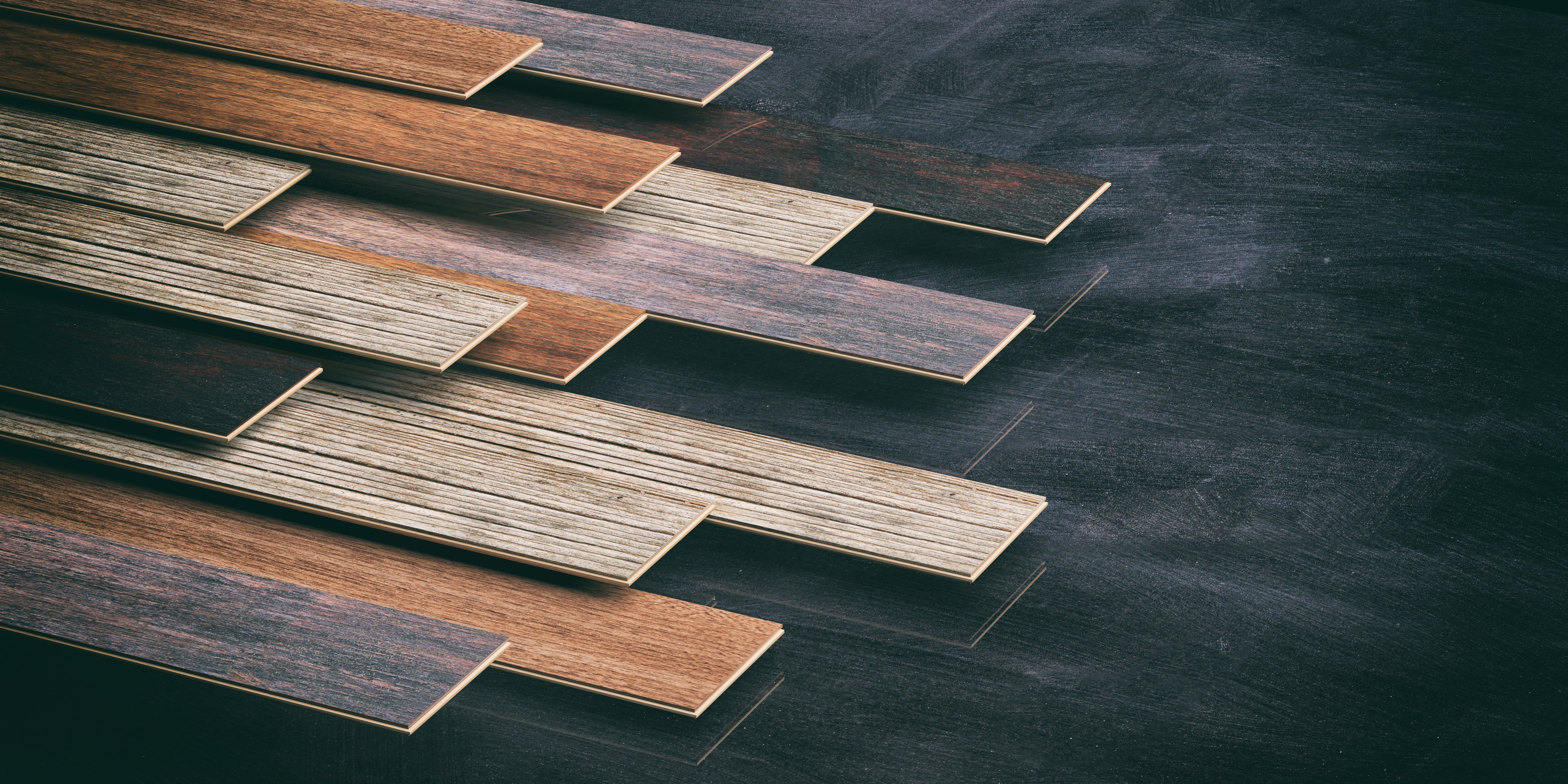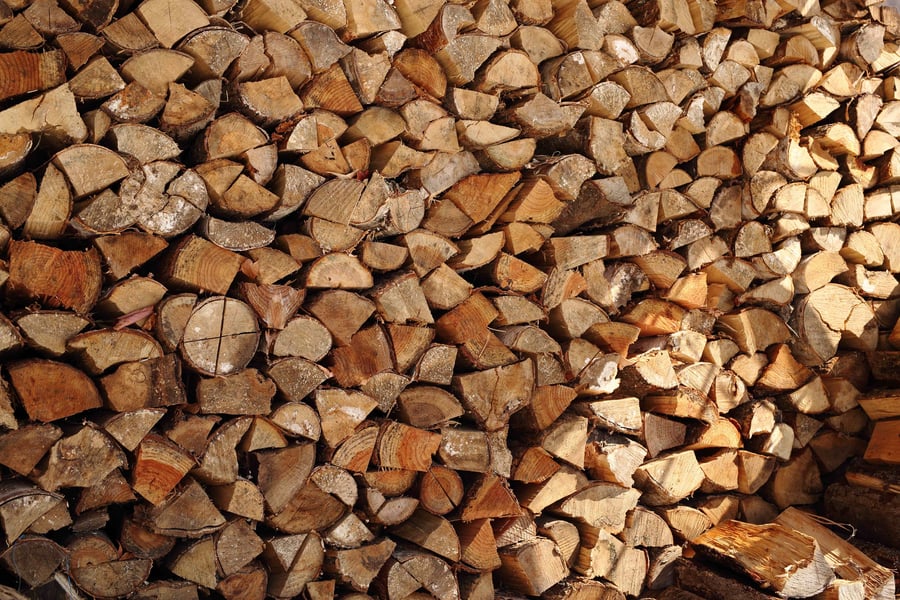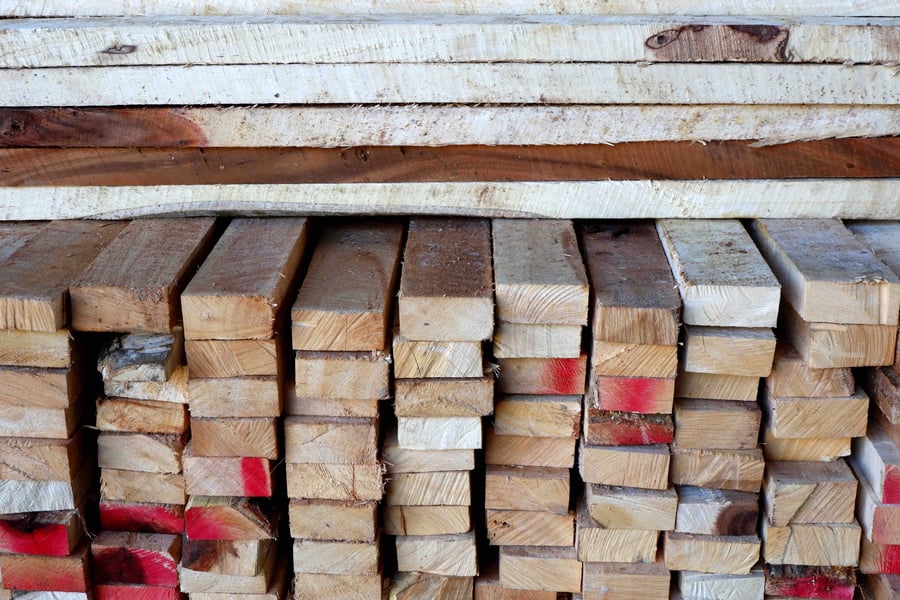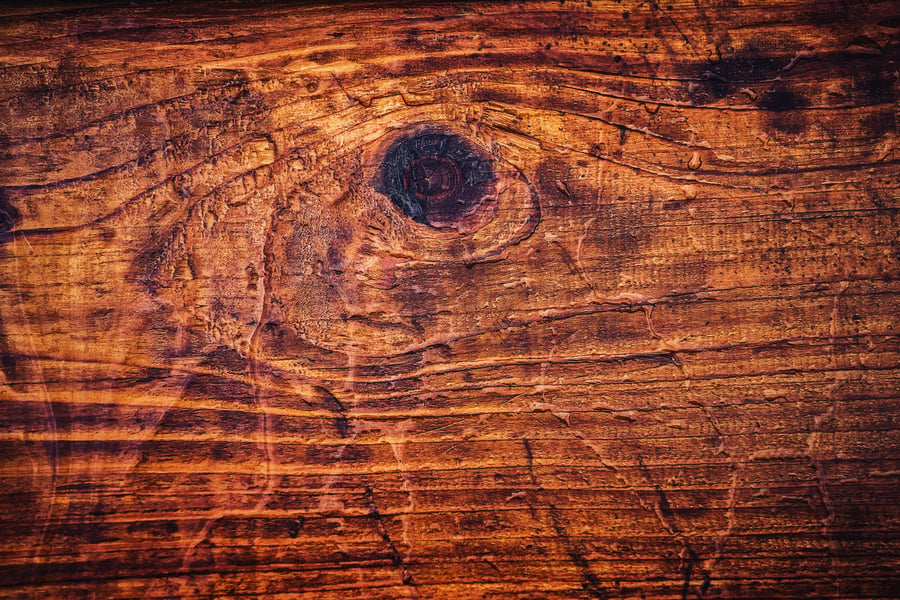Practical Uses For Moisture Meters For Quality Improvement in Wood Manufacturing RX # 2

Rx #2: SELECTING KILN SAMPLES
KILN DRYING BASICS
For kiln drying all hardwood, and some softwood, the basic kiln operation process is
1) Determine the moisture content (MC) of the wettest lumber in the kiln load at the start. The test pieces are called kiln samples.
2) Determine the correct kiln conditions (temperature, humidity and air speed) that are acceptable for this initial MC level.
3) As the lumber dries, adjust kiln conditions as the wettest lumber dries, based on the MC of the kiln samples.
Step 3 is usually based on oven-dry moisture tests and weighing the samples. However, a moisture meter with remote probes (the probes remain in the wood during the drying cycle) can be used successfully in many operations. Delmhorst, who developed this system many decades ago, does have a manual system called Kiln-Mo-Trol available. Wires run from the probes in the lumber to an external switch-box. You can measure the shell and core MC at any time during the kiln cycle, and then change kiln conditions as required. Similar systems are available that are computer based, so the computer will determine the probes’ MC and the control the kiln conditions.
A standard 50 MBF typically holds 8,000 to 10,000 pieces of lumber. The kiln operator cannot measure the MC of every piece of incoming lumber to find the wettest pieces or check every piece near the end of a cycle to determine that the kiln drying process is completed.. So, the operator uses kiln samples (KS), following four basic guidelines in the KS selection process. The wettest pieces are likely to be
1) the thicker pieces
2) the heartwood pieces (for species with mainly heartwood)
3) the quartersawn pieces (dry 15% slower than flatsawn)
4) the most recently sawn pieces
These four criteria work very well for kiln drying lumber without any previous drying.
However, with air-dried or predried lumber, there is a fifth consideration
5a) Air-Dried Lumber: the pieces in the bottom layers of a bottom stack
5b) Predried Lumber: the pieces in the top stacks in a downdraft predryer.
FINDING THE WETTEST LUMBER
Even with these criteria in air drying and predrying, the operator has perhaps a hundred pieces that could be used. The question is “How can the wettest pieces be quickly located?”
The practical answer to this question is to use a moisture meter with a probe that can reach inside the lumber pack. Delmhorst has such a probe, Model 42-E/B, that has two needles at the one end of the probe and a handle at the other end; I call this a “T-Probe” because it looks like a large letter “T”. The probe is inserted into the lumber pile in the space between the stickers; the distance it is inserted determines which piece will measured for MC. Then, the handle is turned which drives the needles into the lumber piece selected, and a MC reading is obtained. The reason that this works is that as lumber dries, the surface dries before the core. So, the surface may read 20% MC while the core is still 40% MC. On a wetter piece, however, the surface will read over 25% MC. So, the pieces within a stack of lumber can be probed easily and quickly; the wettest readings represent the wettest lumber. The wettest pieces are, with the help of a forklift that lifts the pack open, retrieved and used for making the kiln samples.
Note that because the pins on the T-probe only penetrate perhaps 1/4”, the MC reading is not the average MC of the lumber. That is, we use the readings, using the probe, to select the samples, but not to run the kiln or give the actual average MC. The true sample MC needs to be calculated using the standard techniques.
When using the 42-E/B probe, try to drive the needles the same depth every time; that is, turn the handle the same amount every time. As we are not using the precise MC readings from the meter, we do not need to worry about species corrections or temperature corrections.
Overall, using this T-probe technique, along with proper kiln operating techniques, a kiln operator should never hear any complaints about “wet lumber.”
Special Note: The “T-Probe” can also be used to measure the surface MC by driving the needles into the wood only 1/8”. Species and temperature corrections should be made so the MC readings are accurate. This 1/8” reading is the surface MC. One key rule for running a kiln is “Never use a kiln condition that will add moisture back to the lumber.” This rule applies to the initial warming and to the main part of the kiln schedule. (Higher humidity can be used for equalizing and conditioning at the end of a cycle.) There are several reasons for this rule, but the key one is that checks and cracks and cupping will increase when the EMC is higher than the surface MC. In addition, if EMC is greater than surface MC, the lumber will not dry as quickly as desired. So, we need to know the surface MC so that the kiln’s EMC during warming and the initial humidity settings in the schedule must never be higher than the surface MC. When starting the kiln, usually the EMC is 1% or 2% drier than the surface MC.
Rx is from The Wood Doctor, Gene Wengert, President, The Wood Doctor’s Rx LLC
Subscribe to Our Blog
Post Related

Practical Uses For Moisture Meters For Quality Improvement in Wood Manufacturing RX # 3


